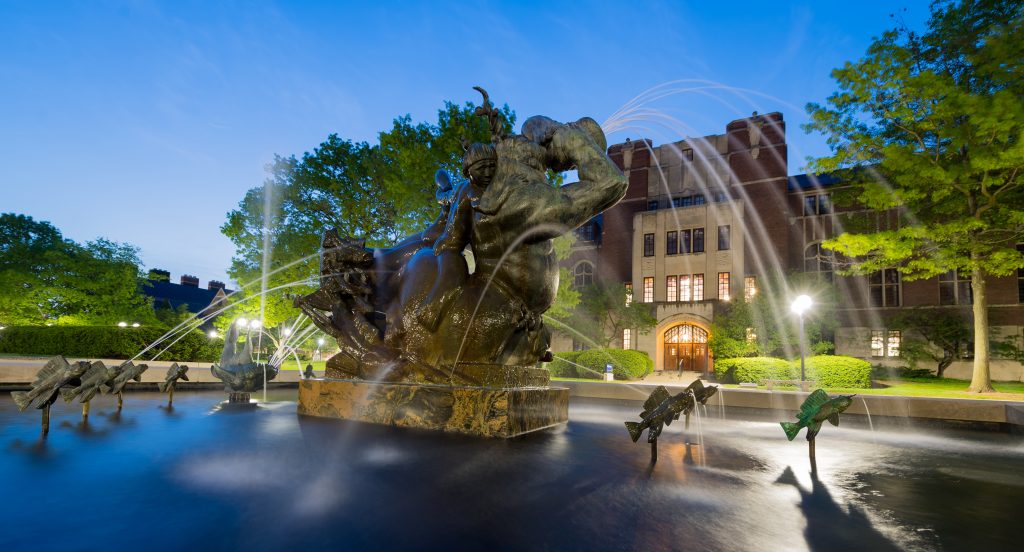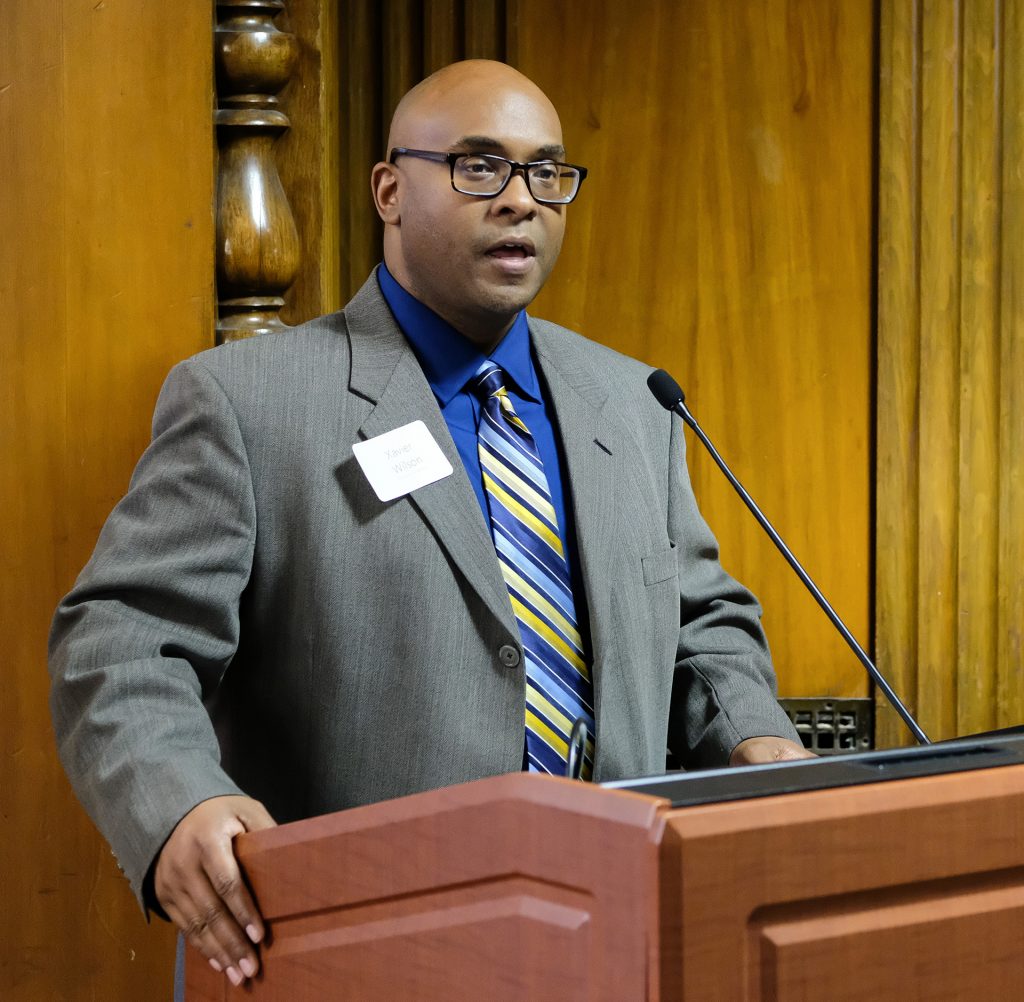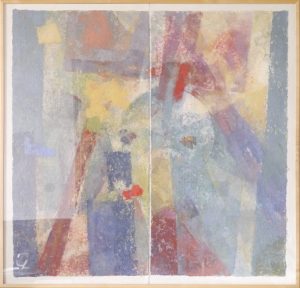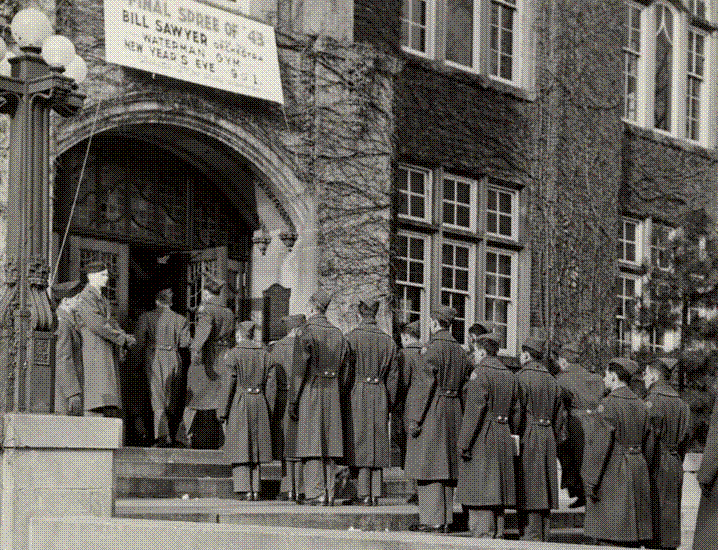
Dear Friends of the Michigan League,
As you read this letter, I sincerely hope you and your loved ones are safe and healthy. Shortly after we returned from spring break, our daily lives took an unprecedented shift due to COVID-19. If you or any of your family members have experienced illness or loss during this time, please know your friends at the Michigan League are thinking of you.
I am blessed to be able to navigate this season with an amazing team. The staff at the Michigan League and our partners in Michigan Dining and Conference and Events are resilient leaders. It is an honor to work alongside them each and every day responding to the unknown, finding new opportunities to collaborate, and maintaining community during the global pandemic.
The university began shifting to an alternate learning model during the week of March 9, 2020. Within a few days, students began moving back home, in-person meetings and events on campus were canceled, the Inn at the Michigan League closed to the public, and a new “normal” took shape. The Michigan League, along with the Michigan Union, was recognized by the university’s president as serving the critical mission of the university community. The Michigan League continued to open its doors, as the servant it is, meeting the students and university community until late March.
I am reminded of the gift and strength of community. The Michigan difference and its values give life to our community. This very present community has been the anchor as we face the waves of uncertainty and navigate the uncharted waters during COVID-19. Because we have come together as a community to support our students and to continue to deliver our mission, I am hopeful. My desire is that you will remain safe and healthy, and together we will get through this season as a community, as friends, as family.

Warm Regards,
Xavier A. Wilson
Director of the Michigan League
Associate Director of University Unions
Cassara’s Solstice on display in League
Visitors of the Michigan League regularly enjoy a variety of art in diverse mediums. This currently includes a handmade paper creation, titled “Solstice”, by the University of Michigan’s own Frank Cassara. “Solstice” can be viewed on the first floor of the League. Cassara is well known for his invention of a unique one-bite white etching ground and for new techniques of intaglio printmaking.

Francesco (Frank) Cassara (M’54) was born on March 13, 1913 and died on January 13, 2017. Cassara is a painter and printmaker who studied under scholarship with Walter Speck and Reginald Bennett at the Detroit School of Art. He also completed special studies with Stanley Hayter at Atelier 17 in Paris and, later, fresco painting with Jean Paul Slusser at the University of Michigan. He earned a master of science degree in design at U-M.
Cassara’s interest in art began early. He volunteered for the Civilian Conservation Corp (CCC) during the depression and captured his observations of life in oil, watercolor, and pencil drawings. Later Cassara was recruited by the Works Progress Administration (WPA) Federal Art Project to create several outstanding murals in the Michigan cities of Highland Park, Lansing and Detroit, and in Sandusky, Ohio.
At the University of Michigan, Cassara was a Professor of Art with the Penny W. Stamps School of Art and Design from 1947 until 1983. In 1976, he began the study of handmade paper. “Solstice” represents this medium. The handmade papermaking process transforms cotton sheets, linen tablecloths, water, and artists segments into images that attract the eye, start conversations, and represent visual expressions appreciated through texture, color and dimensions.
Professor Cassara is represented in the permanent collections of many museums and public institutions, including the Library of Congress, the Bibliotheque Nationale in Paris, the United States Information Agency, Oklahoma Art Center, Detroit Institute of Arts, Free Library of Philadelphia, and many universities. He retired as a Professor Emeritus of Art.

Student experience leads to UU career

Tim Williams, a graduate intern for University Unions, chose higher education as a career path because of his experiences as a student employee. Williams started with University Unions in May 2016 as a student employee on the set-up staff. His leadership skills and well-honed customer service approach led him to being promoted to a student building manager.
“I never realized Higher Ed was a field and that the work I was doing as a student could align with my career. It never occurred to me that it could lead to a career,” Williams said.
Williams is a graduate student with the School of Education pursuing a Master of Arts in Higher Education with a concentration in Management and Organizations. Williams, from Gibraltar, Michigan, plans to graduate in December 2020. It was during his undergraduate time that he recalls meeting great people and discovering a joy with working for the Unions. Williams now seeks to facilitate the higher education experience for others as a leader in higher education.
Working with the leadership and administration in University Unions was formative in Williams’ discovery of this career path and he quickly realized the importance of balancing student interest in major decisions.
“Students can become better people by the informal educational experience outside of the classroom by working on campus. I was introduced to a new perspective and things that I didn’t know existed before,” Williams said. “Working as a student employee on campus at the Michigan Union and Michigan League was truly a transformational experience.”
The adaptability of the Michigan League has been fascinating for Williams to observe, he said.
“From the hotel to the ballroom, where alumni have weddings and students practice ballroom dance, the League continues to meet the needs of current students,” he said, adding Maizie’s Kitchen and Market as a great example of the League’s evolution.
“Maizie’s renovation exceeded our expectations. Students are really drawn to it. Renovating the former Beanster’s Cafe to create Maizie’s was a very successful project.”
In addition to his work at the League, Williams has served on the Michigan Union Board of Representatives since February 2017. Williams has been a building manager at both the Michigan League (during the Union’s renovation), and at the Michigan Union currently and prior to the Union’s renovation.


Flexible, welcoming spaces; historic charm
at the renovated Michigan Union
The Michigan Union, which has been a beloved center of community for more than 100 years, reopened in January after a twenty month renovation.
After celebrating its 100th anniversary in October, January’s Michigan Union reopening acknowledged the culmination of space adjustments and carefully designed renovations to help the university meet the needs of current and future students, honor the architectural and historic integrity of the Union, and complete significant infrastructure upgrades, according to Susan Pile, senior director of University Unions and Auxiliary Services.
State-of-the-art technology coupled with beautiful historic charm, the Union has been revamped with refreshed spaces to serve everything from student-focused activities such as gathering, studying and relaxing to community and alumni business meetings and conferences, to special occasions like weddings and receptions.
New spaces include the:
- South Lounge — The brand-new South Lounge is a bright space adjacent to the Willis Ward Lounge that offers both study and lounge space that can be closed off for private events.
- Pond Room — The Pond Room has been redesigned, along with the old Tappan Room, to provide a more functional space with two projection screens, a monitor, and a built-in sound system.
- Seasonal Courtyard — Completely re-envisioned as an enclosed four season space with a stunning glass roof, the courtyard features a large projection screen, built-in sound system, and wood floors. It was the site of the grand opening celebration in January.
- Wolverine Room — Located on the third floor, the new Wolverine Room is a large, inviting room with a charming interior window that overlooks the ballroom. Just outside the entryway is a lovely and inviting space that can serve as a reception area.
- The IdeaHub — This state-of-the-art student organization and student involvement space is located on the second floor of the Union, wrapping around the newly enclosed courtyard. This inclusive space for student organizations is a welcoming environment fostering collaboration across all types of student organizations.
The project also included deep infrastructure renewal such as electrical, mechanical and plumbing system improvements, elevator upgrades, replacement of the roof, restoration of windows, interior finish upgrades on floors one through four, and restroom upgrades.
The Union’s North Entrance was also redesigned to become a more welcoming, open and light-infused entrance with an enclosed ADA-accessible ramp.
With a goal of balancing history with the future, the design also incorporated many sustainability measures. Overall upgrades in the 250,000-square foot landmark focused on energy efficiency and sustainability, with an estimated 37 percent energy savings. This included:
- Complete restoration of the Union’s 540 windows by Full Spectrum Stained Glass, a Colon, Michigan-based restoration company. This included the restoration of wood sashes, leaded glass panels, hardware and weather-stripping.
- Peterson Glass Co. fitted the windows with aluminum-framed Thermolite storm windows and weather stripping to increase energy efficiency, which will reduce noise infiltration and provide a security barrier.
- Improved air conditioning system throughout the building.
- LED lighting used in all renovated areas.
- Occupancy sensors used in all renovated areas.
- Daylighting controls in the courtyard.
- A 20 percent water consumption savings obtained through the use of low flow fixtures.
- A regional chilled water plant (via the South Quad Chilled Water Plant) which allows for lower operating costs, and less equipment to service and maintain.
- Chilled water for air handlers and fan coils.
A brief history of the Michigan Union

Founded in 1904, the Michigan Union began as an “all-inclusive organization” focused on providing feelings of unity for men on campus. Its first meeting at Waterman Gymnasium drew more than 1,100 students. Key milestones in its 100-year history include:
- In its earlier days the organization was run in the home of Judge Thomas M. Cooley, a longtime University of Michigan Law School professor, on State Street at the end of South University Avenue.
- “The Union” soon outgrew the Cooley House, and in 1910, the Michigan Union hired architect brothers Irving Kane Pond and Allen Bartlit Pond of Ann Arbor to design a new building.
- Events of the time caused a snag and progress of construction soon lagged due to the American entry into World War I, but the building officially opened in 1919.
Over the years, the Union has evolved and grown as student needs have changed, making advancements and strides with the times. For example, originally women were only allowed to enter the building through the North entrance and when accompanied by a male escort, due to the founders’ belief that the women’s center at that time was in “the parlors of the Barbour Gymnasium.”
In 1956, the policy of requiring escorts and of requiring women to enter through the North entrance was finally dropped. In 1968, the last place in the Union to have such a policy, the Billiards Room, ended its policy and admitted women on an equal basis. Now the Michigan Union is a welcoming center for everyone, encouraging diversity, discussion and participation from all.
Over the decades, the Union has become the center of campus life hosting diverse activities including farmers markets, band performances, lectures, poetry slams, and activism events.
The current renovation to the building is not the first. The Union saw major additions in 1937, 1956 and has seen small renovations over the years. As in the founding of the Union, students have continued their role by advocating for upgrades to the facility. The most recent project is the first renovation of the facility in more than 25 years with a design goal to restore the historic nature of the facility as well as make student and staff spaces more effective and usable.
The original Michigan Union contained a bowling alley in the basement, a barbershop and student eatery on the ground floor, as well as lounges, reading and committee rooms, dining areas, a billiards room, and accommodations for returning alumni.


Student research helps Michigan Catering, Dining offer carbon neutral option
Catered events do not always bring environmental sustainability to mind, yet two students partnered with Michigan Dining and Michigan Catering to inspire change. Michigan Dining interns Caroline Baloga and Cameron Clark helped develop a carbon neutral menu so festive events could be a celebration of the earth as well.
“Michigan Catering has worked to track and understand the impacts of food on the environment in regards to climate change. Given the importance of addressing our climate crisis, we have begun to designate low carbon menu items, food that requires less carbon dioxide, methane, nitrous oxide, and other greenhouse gasses to be emitted,” explained Devon Harrison, Director of Catering for Michigan Catering. Michigan Catering is working closely with sustainability experts at the University of Michigan and will continue to add items that better mitigate the effects of climate change.
Determining the best items to offer on the low carbon menu was part of a summer project conducted by interns Baloga and Clark. Baloga is a senior studying program in the environment and international studies with a minor in art and design. Clark is a master’s student in environment and sustainability and graduate student instructor.
“As large groups come on campus and use catering services, we thought this would be an area in which we could have an impact,” explains Clark. “As catering foods can have many options and can be difficult to quantify, we wanted to create a simplified, decision-free menu of selections.”
Baloga said the project was based on a previous study conducted by U-M professor Dr. Martin Heller that assigned carbon equivalents to over 300 unique food items.
“Information from this research was used to inform our assessment of menu items on the catering menu,” Baloga said. “We created a decision tree with numerous questions that would sort a menu item into one of five different categories; low, medium-low, medium, medium-high, and high carbon.”
Dishes containing carbon intensive foods like beef, lamb, sheep, goat or crustaceans, landed at the top of the decision tree. That’s because the carbon weight of these dishes was automatically higher than most other menu items.
“We realize that our decision tree is simple, and does not take into account all the intricacies of assessing the environmental impact of a food item, but we thought this assessment would provide a helpful starting point to give people some rules of thumb to go by when trying to make their food choices less environmentally impactful,” Baloga said.
The students ran the catering menu items through a process using the decision tree. First they analyzed the ingredients in each item, made assessments and, finally, assigned them to the appropriate decision tree category.
“We were able to create a low-carbon lunch menu and a low carbon dinner menu from the items Michigan Catering chefs already had available. We were able to make the options simple to adjust,” Clark said.
The students were most surprised to find out the relatively high carbon impact of cheese.
“I am a vegetarian, and I find that many vegetarian options are very cheese heavy, so I think it is important that people realize that in large quantities, cheese can really have a high carbon impact that can almost be comparable to meat. Additionally, I was surprised by the lower carbon impact of turkey. We were able to include menu items with turkey on the low carbon menu, because turkey does not have as high of a carbon impact as most other meat options,” she said.
Clark added that grains and vegetables have the lowest impact.
The students’ project only focused on the carbon equivalents of food items.
“People must also consider other factors that go into producing foods that can have negative impacts on the environment, such as the amount of water used in production, impacts on soil, land use, environmental pollution/contamination, animal welfare,” Baloga said.
Low carbon menu items include plant-based foods, grains, pasta and beans, and fresh fish. Michigan Catering and Michigan Dining also offer Zero Waste events with all serving items being fully compostable or recyclable.
The low carbon menu supports the University of Michigan President’s Commission on Carbon Neutrality, which brings together the university community and regional partners to explore how U-M can reduce its carbon emissions to environmentally sustainable levels. Commission members will develop recommendations for the president to create scalable strategies that other institutions can use to achieve the same goals. The commission will release an interim progress report with final recommendations expected in fall 2020.


Maizie’s receives Platinum level certification
In January 2020, Maizie’s in the Michigan League received its Platinum level sustainability certification. The Office of Campus Sustainability recognizes Maizies’ team for doing its part to carry out sustainable efforts campuswide:
- Composts pre-consumer food scraps and offers public composting bins in the cafe.
- Promotes public composting, which has encouraged education from staff to customers.
- Recycles bulk coffee bags.
- Provides incentives for student staff to take the Planet Blue training, resulting in over 50 percent certification in the program.
Food waste and food packaging account for 30 to 40 percent of what U-M sends to landfill from most buildings. By switching to compostable packaging, almost all of this waste can be diverted from landfill and delivered to a nearby compost facility to break down into a useful soil amendment for landscapers, farmers, and gardeners.
Love Maizie’s?
Here’s the recipe for the fabulous pasta salad!
2 cups tri-colored tortellini pasta (store-bought cheese-filled is perfect)
1/2 cup broccoli florets
1/4 cup shredded carrots
1 tbsp chopped green onions
1/4 cup thin-sliced bell peppers
2 tsp white balsamic vinegar
1 tsp lemon juice
1 tsp dijon mustard
1/2 tsp fresh thyme minced
1 tsp basil chiffonade
1/2 tsp salt
1/4 tsp black pepper
1/8 cup olive oil
Blanch the tortellini pasta in boiling salted water for 6 to 8 minutes. Drain and chill.
Prepare the vegetables and place in large bowl.
In a small bowl, whisk together the vinegar, lemon juice, mustard, fresh herbs, salt, and pepper. Continue whisking while slowly drizzling the olive oil into the mixing bowl. Emulsify to a dressing consistency.
Toss all of the prepared vegetables in with the pasta and dressing. Combine gently but thoroughly. Adjust the seasoning with salt and pepper if required.
Serve immediately or chill.

HAVE YOU CREATED YOUR MICHIGAN LEAGUE LEGACY YET?
Legacy gifts from generous alumni and friends provide the future support needed to achieve the university’s long-term commitment to excellence. A bequest is the easiest and most tangible way to accomplish this. If you have already included the Michigan League in your estate plans, but have not previously notified us, please let us know. We would like to properly thank you for your support, ensure your wishes are met, and plan with you for the building’s future.
WAYS TO FUND YOUR GIFT
Your gifts of cash, pledges or appreciated securities will enhance the experience of all University of Michigan students. Wills, estates, and planned gifts allow you to create a lasting legacy that will allow our students to grow and thrive for generations to come.
Contact us with any questions as well as for more information on how you can include the University of Michigan in your estate plans or how to document your wishes and become a member of the John Monteith Legacy Society.
Student Life Development
Wolverine Tower, Suite 9000
3003 South State Street
Ann Arbor, Michigan 48109-1288
Phone: 734.647.7309
Email: [email protected]




